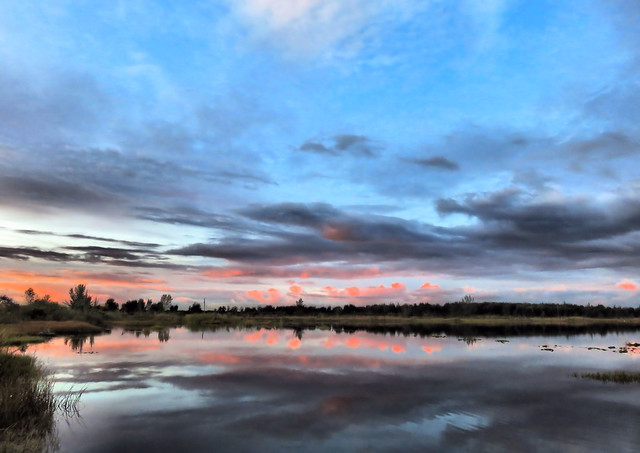
...dappled reflections of the full Moon rising behind the clouds over our back yard lake...
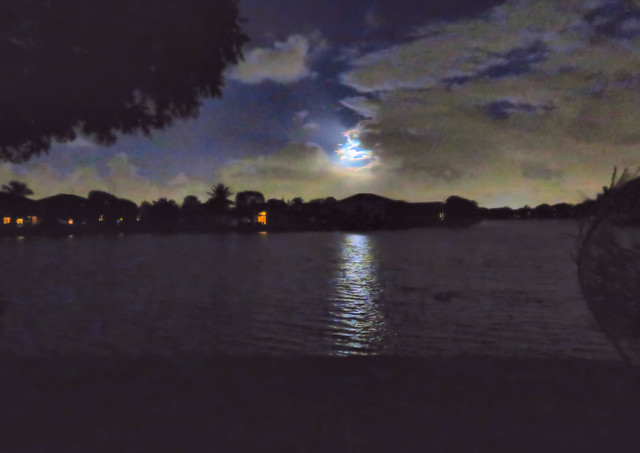
...butterflies such as this Monarch...

...and plenty of mosquitoes! Many looked like this one, with white "heads" (actually the top of their thorax is white), species unknown but probably a type of salt marsh mosquito:
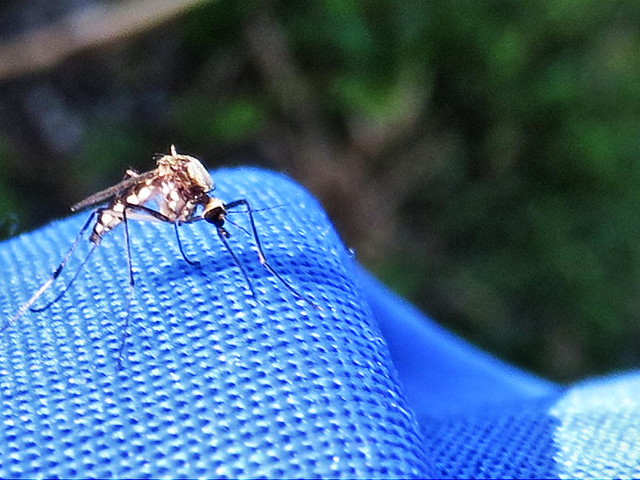
Chasing after rare birds can be a wonderful sport. In recent years I have lost some of my zeal to add new species to my life list. I passed by the opportunity to tick a Variegated Flycatcher in Fort Lauderdale's Evergreen Cemetery. It persisted for about a week, during which time birders took some wonderful photos of this wanderer from Central or South America. This was only the second time it has been seen in Florida. When I saw the great photos taken by my friends I felt tinges of envy as well as guilt for my sloth in not bothering to pursue it.
When I lived in New Mexico I had the luck of seeing a closely related species, the Piratic Flycatcher, a resident of Mexico as well as Central and South America. I call it pure luck because Mary Lou and I already had plans to drive to visit our son and family in the Texas Panhandle for a few days, and this rare bird was reported only a day or so before our scheduled departure.
This was only the third confirmed sighting of a Piratic Flycatcher ever recorded in the USA, the second for New Mexico. Our 220 mile route to Amarillo from the Albuquerque area took us close by the site of the sighting which was at Bosque Redondo, near Fort Sumner, New Mexico.
We missed it on the way out, but as we returned home four days later we again made the brief detour, and immediately found a small group of birders watching the Piratic Flycatcher. Within minutes after arriving I focused my little 2.0 megapixel point-and-shoot camera through the lens of my spotting scope and obtained some fairly clear photos (September 16, 2003). The first USA sighting of a Piratic Flycatcher occurred in Florida in 1991.
The first Piratic Flycatcher to visit Florida was initially misidentified as a Variegated Flycatcher, so I can consider this as my retroactive consolation prize:


See more about this interesting bird, including how it gets its name here in my January, 2007 blog (That's right-- I did not start blogging until late 2006).
Perhaps it was that nagging guilt that stimulated me to get moving and see another rare bird. This time it was a vagrant from the Bahamas which showed up in Markham Park, only about a half hour drive from our home.
It was a Western Spindalis, a species of tanager which rarely visits Florida and is almost never seen very far inland. I had seen one 10 years previously in Key West. This one possibly was helped to get here by the strong easterly winds and storms we had been experiencing during the prior two weeks. We drove through periods of heavy rain without much hope of seeing the bird.
When we parked in a lot near where the spindalis had last been reported the place looked dreary and deserted. Mary Lou suggested we drive along the road, and we immediately saw two birders peering through binoculars and aiming their cameras. After a quick U-turn to park we hurried over towards them just as the rain increased. Mary Lou held an umbrella over my camera as I manipulated a garbage bag to protect it. We saw the bird for only 3 or 4 minutes before it flew away. It was beautiful indeed!
Male Western Spindalis:
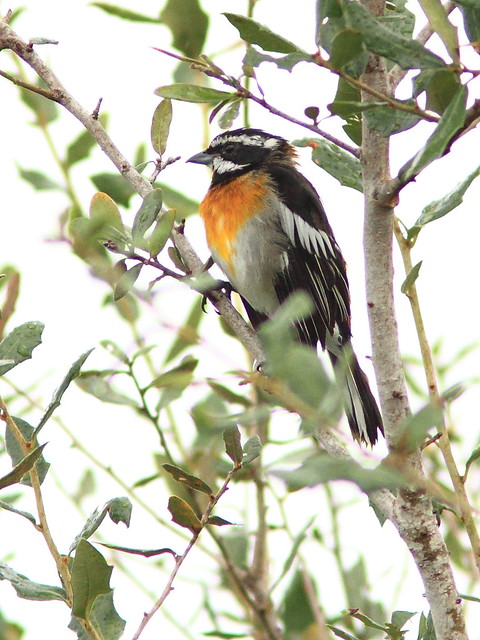

The spindalis was in the company of several Spot-breasted Orioles. This Central American species was introduced into South Florida in the late 1940s and became rather common in older established neighborhoods in and around Miami and Fort Lauderdale. They usually travel in small groups, and I learned that a flock of at least six birds now inhabit the park:
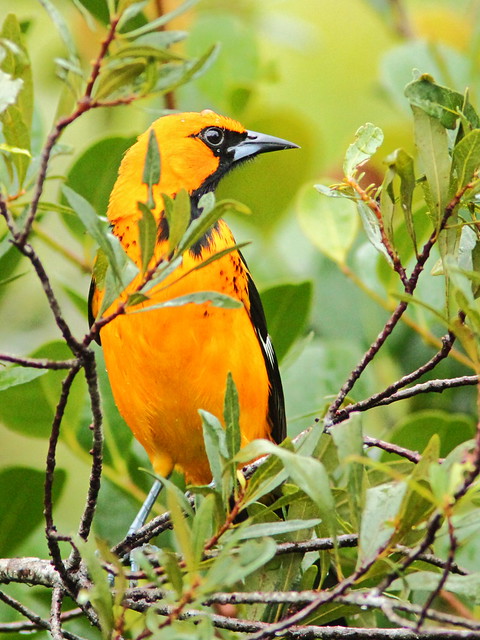
The Spot-breasted Orioles are strikingly beautiful. We returned two days later, not finding the spindalis but we did obtain more views of the orioles:
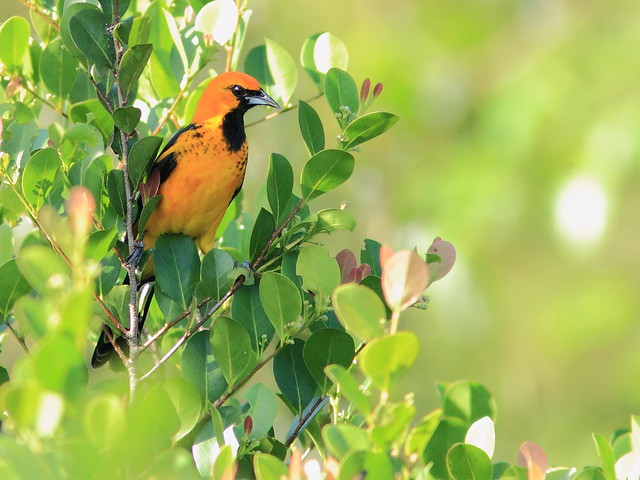
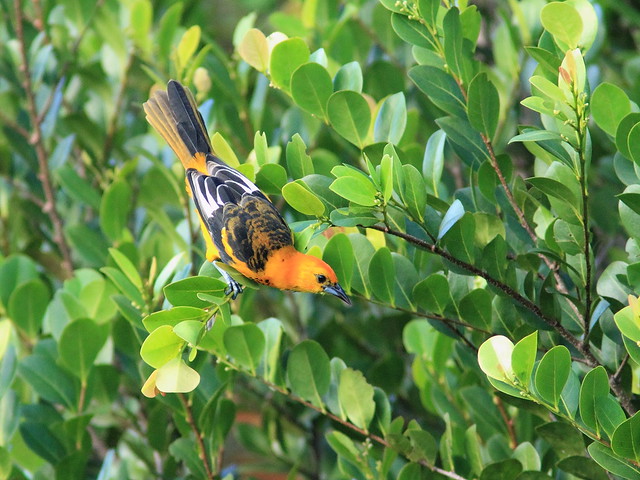
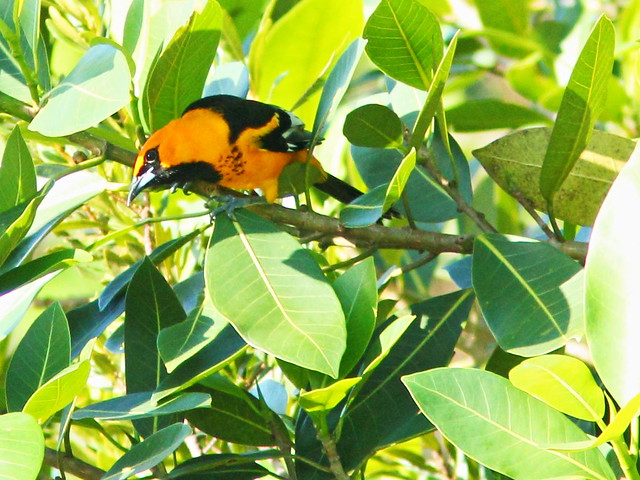
The orioles contorted their bodies, in search of insects and berries. The fruit of the native Cocoplum was a particular delicacy:
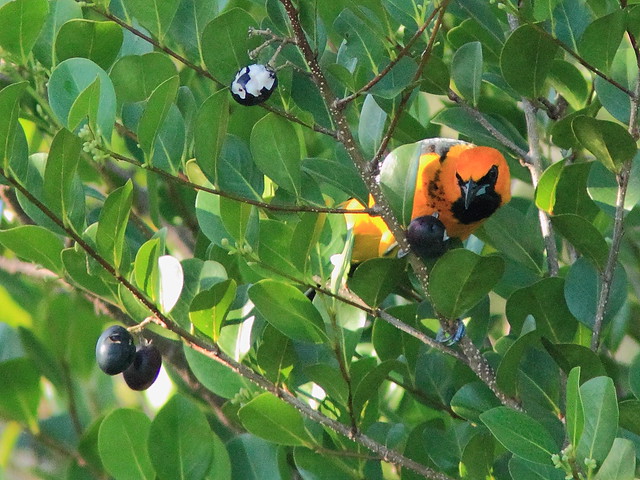
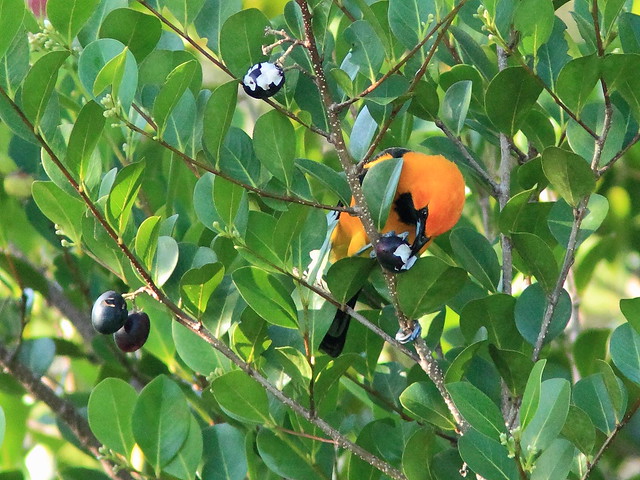
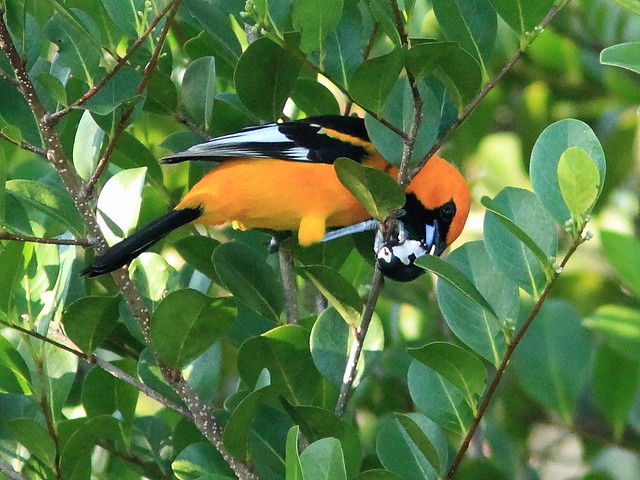
A Ruby-throated Hummingbird foraged for insects in the Cocoplum:
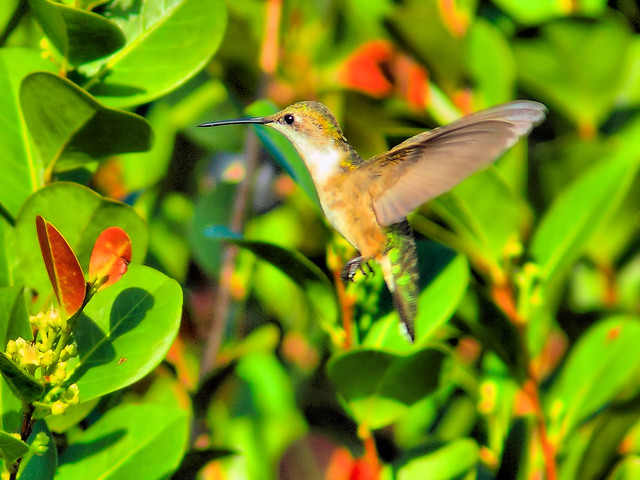
It rained every day for the better part of two weeks. Although we did not walk out into the wetlands, this Tricolored Heron appeared at the edge of the lake in our back yard around noon. By the time I got out my camera the heron had moved to our next door neighbor's yard, where it fished among a bunch of coconuts which the winds had blown into a corner of the lake. No need to chase after this handsome critter!
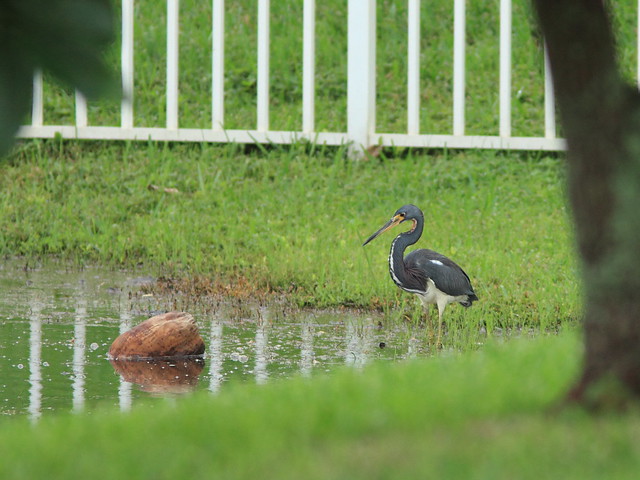
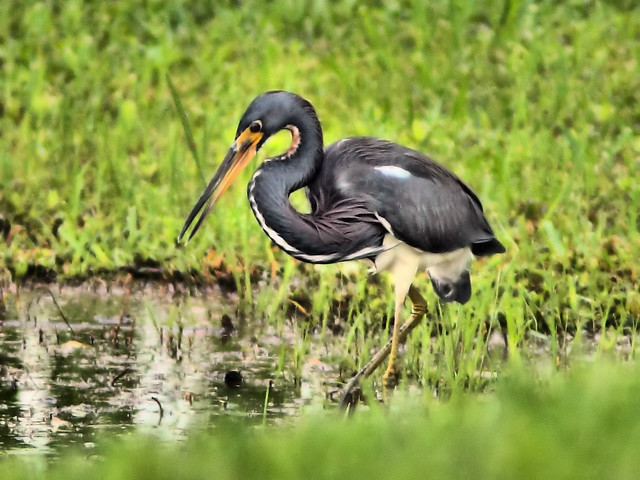
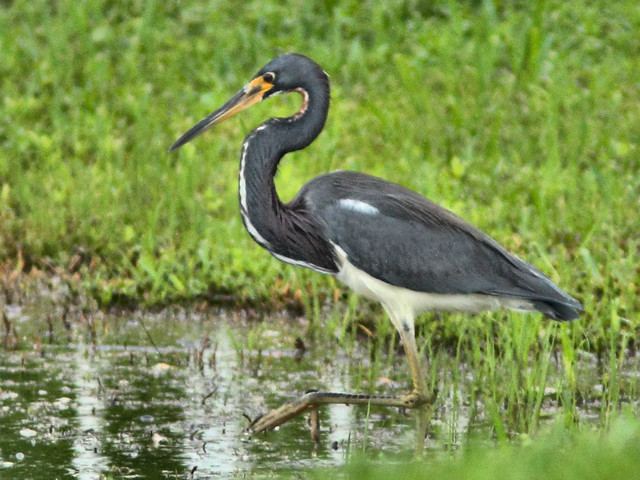
= = = = = = = = = = = = = = =
Linking to Misty's CAMERA CRITTERS,
Linking to Eileen's SATURDAY'S CRITTERS,
Linking to GOOD FENCES by Tex (Theresa).
Linking to WEEKEND REFLECTIONS by James
Linking to BirdD'Pot by Anni
Linking to Wild Bird Wednesday by Stewart
Linking to I Heart Macro by Laura
________________________________________________
Please visit the links to all these memes to see some excellent photos on display
________________________________________________